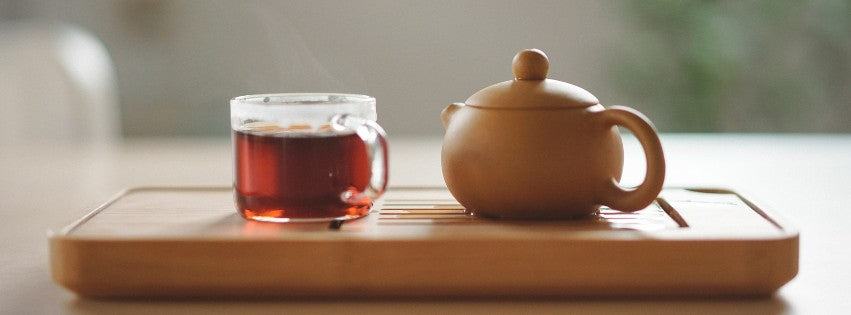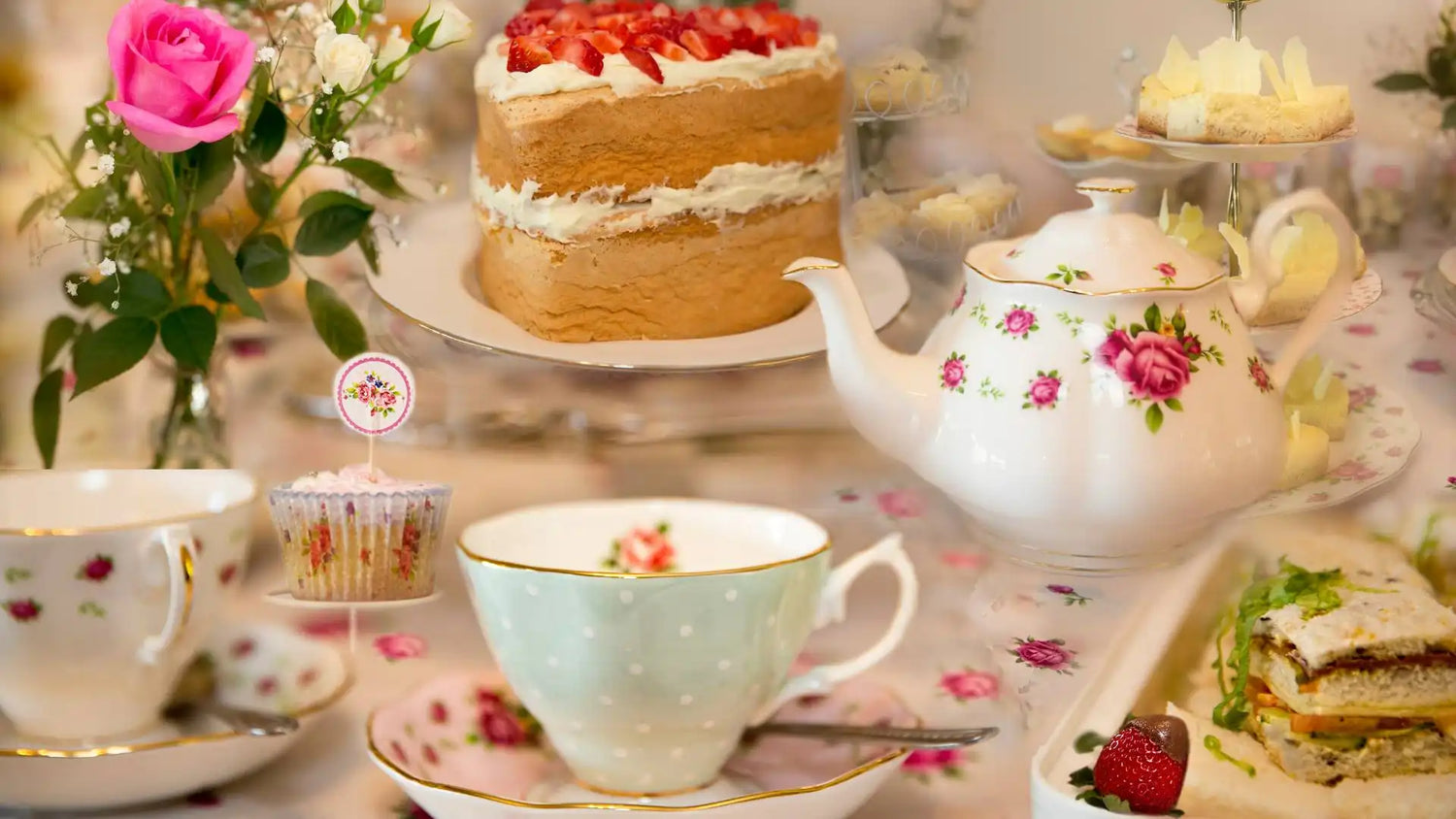Long before Tea became synonymous with the leaves of the Camellia sinensis plant, Tisanes were a part of the healing traditions of homes around the world. The traditional Tisane has returned to our lives as Herbal Teas
In Proust’s In Search of Lost Time, sipping a cup of tea transports Proust to the happy memories and years of his childhood. His aching heart feels soothed and he is filled with a sense of hope. This sequence has been immortalised as the ‘Proustian memory’ – a moment of sudden, involuntary and intense remembrance, when a smell, a taste, texture, or, as in this case, a cup of tea, transports you to another place, another time. Literary sleuths have postulated, based on Proust’s description, that it was a cup of Tisane and not what we today understand as Tea that was the origin of the ‘Proustian memory’.

So, what is a tisane? And how is tea different from it?
As we understand it today, Tea is the term used to refer to a brew that uses the leaves of the Camellia sinensis plant. Green tea, black tea, connoisseur blends such as Earl Grey or Lapsang Souchou all use the leaves of the Camellia sinensis plant. Hence, the use of the term Herbal Tea or Tisane to refer to a brew, which is either an infusion or a decoction, that uses the leaves of other plants or spices. Traditionally these tisanes have always had curative and therapeutic benefits. Tisanes or Herbal Tea is the term used today to refer to caffeine-free herb and spice infusion or brews of any kind barring Tea, which is used when using leaves of the Camellia sinensis plant.
Tisanes have been a huge part of the traditional system of medicine in India for centuries and are still recommended for physical and mental healing. Ayurveda, the ancient medicine system of India, also suggests Tisanes for aligning our body and mind to seasonal changes and balancing our three doshas. As we enter the month of Sharad ritu or Autumn our Vata dosha is more prominent. So, a good Ayurvedic tisane for the season is a Cumin-Coriander-Fennel (in equal proportions). A Ginger-Cinnamon-Clove tea is also recommended after dinner instead of black tea or coffee to balance Vata. Chamomile, Comfrey, Brahmi or Jatamansi tea can also be drunk to reduce stress and balance emotions.
There are two ways to brew Herbal Tea: infusion and decoction. In the process of infusion, the herbs, spices and other materials are steeped in hot water. An infusion is the preferred way of brewing when leaves, flowers, crushed berries or seeds are being used as most of them easily release valuable nutrients. “The basic rule of thumb is to pour boiling water over the herbs, cover the pot and allow to steep anywhere between 10 to 30 minutes. The longer a tea steeps, the stronger it will taste,” writes Kathleen Brown in her book Herbal Teas for Lifelong Health.
A decoction is when the ingredients are allowed to simmer in boiling water for about 20-60 minutes in order to release their nutrients. This method is preferred when brewing Herbal Teas from roots, barks or more woody parts of a plant. When using a combination of ingredients such as flowers and roots, it is advised to use both the methods. First let the roots or bark simmer in boiling water. Then remove the pot from the heat and add the leaves, herbs or spices and allow them to steep for 10-20 minutes.
In an earlier age the ritual of teatime was one that gathered into it a certain kind of grace and elegance. The finest of Porcelain, the daintiest of sandwiches and the beguiling aroma of a steaming cup of fragrant tea… In our rushed and busy lives, we all could benefit from the peace and relaxation of a ritual teatime.
The therapeutic impact of Tisanes has been acknowledged by research. The aroma can in some cases offer relief from stress and help calm the mind. The taste of Tisanes can vary, depending upon the ingredients. But it is the potent power of the natural ingredients that make Tisanes very powerful. For example, Ginger tea can help relieve nausea; Cardamom tea can help aid indigestion; Peppermint tea has antibacterial and antioxidant properties, etc. Also, because Tisanes are caffeine-free, they also contribute to our daily water intake. Given the recent surge of popularity that Tisanes have enjoyed, you may already have figured out your favourite blends but here is a small selection of Tisanes that you might enjoy discovering.
Mint Delight Tea: Spirited and sprightly medley of excellent green tea with carefully selected spearmint and peppermint leaves. Combined with the goodness of the most sought-after superfoods, mint and green tea. Cheers to the perfect and scrumptious detox drink! Steep it hot or iced, this green tea can be sipped any time of the day.
Queen of Herbs Tea: Tulsi is considered “The Queen of Herbs”. Smooth and gentle blend of Holy Tulsi and Green tea balanced with fine nuances of ginger and lemon. This tea encourages tranquillity, clarity, relief from stress, robust immunity, and stamina. With its fresh taste and an astonishing array of benefits, it is quite simply perfect.
Saffron Medley Tea: An indulgent blend with a rich dose of saffron, green cardamom and cinnamon on a base of the best black tea. A sweet dessert-like blend to mark the festivities, this tea is delicate and exotic with a bit of flavourful saffron. It all makes for a fine chai that evokes the right mood for a great occasion.
Golden Spice Relish Tea: A timeless Indian combination of pure golden Turmeric chunks with the goodness of green - Moringa, Ashwagandha, Lemongrass, Black Pepper along with the sweetness of Licorice in a unique herbal medley - soothing and smooth. It is anti-inflammatory and rich in anti-oxidants & also helps concentrate besides supporting digestion and boosting immunity.
Earl Grey Tea: A joyous citrusy black tea blend that captivates you from the first sip! Our Earl Grey Citrus Black Tea is a blend of the finest black teas from India mixed with a generous dose of premium Bergamot Oil. The dry leaf boasts of a deeply refreshing aroma. Indulge in the bright and flavourful liquor.
Muriel Barbery writes in The Elegance of the Hedgehog, “When tea becomes ritual, it takes its place at the heart of our ability to see greatness in small things.” In an earlier age the ritual of Teatime was one that gathered into it a certain kind of grace and elegance. The finest of Porcelain, the daintiest of sandwiches and the beguiling aroma of a steaming cup of fragrant tea… In our rushed and busy lives, we all could benefit from the peace and relaxation of a ritual teatime. But if that remains a distant dream then we can at the very least enjoy the benefits of a Tisane. Who knows when that fragrant cup of tea becomes a ‘Proustian memory’ and takes you to your very own happy place.





